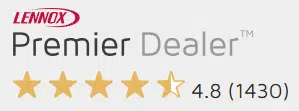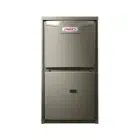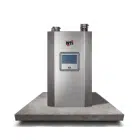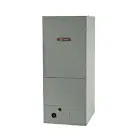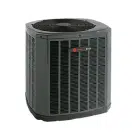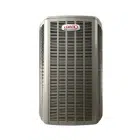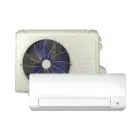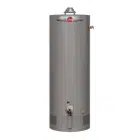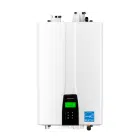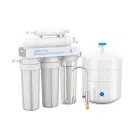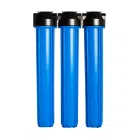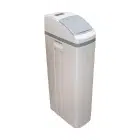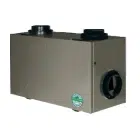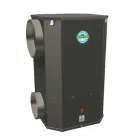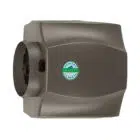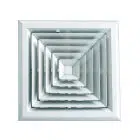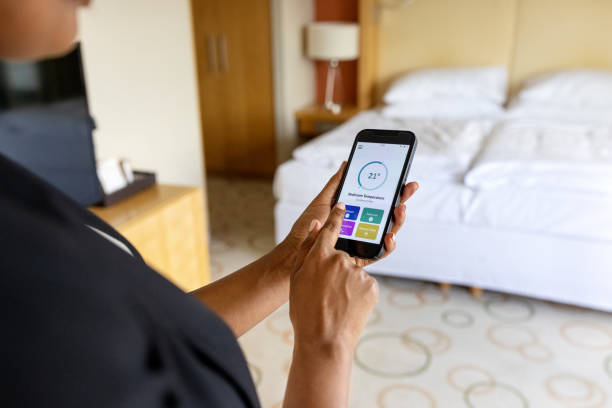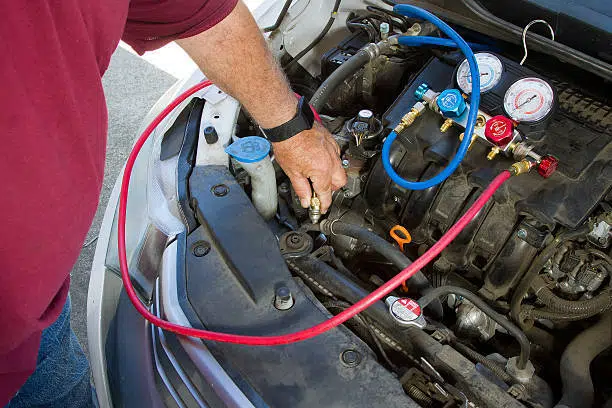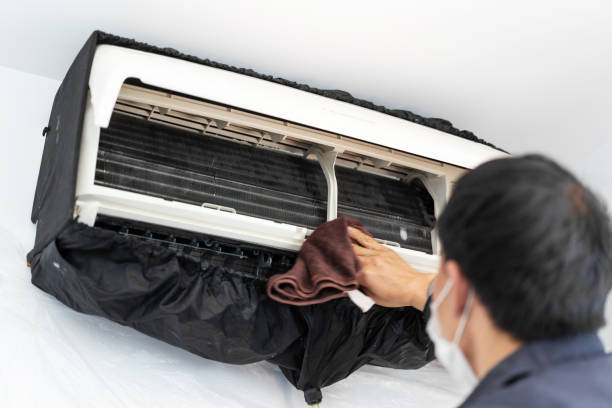
Table of Contents
Daikin ductless air conditioners are among the most reliable and energy-efficient HVAC solutions available in Canada. Their popularity stems from their ability to provide precise temperature control while maintaining low energy consumption. However, like any other complex system, they are prone to occasional malfunctions. When AC issues arise, Daikin units display specific error codes to help identify the problem.
Understanding these error codes is crucial for timely maintenance and avoiding costly repairs. This guide explains how to interpret Daikin ductless AC error codes, their causes, and how to resolve them efficiently.
How to Understand Daikin AC Error Codes?
Daikin AC units come equipped with an advanced self-diagnostic system that displays error codes on the indoor unit’s LED screen or remote controller. These codes provide a direct insight into specific issues, such as sensor malfunctions, compressor failures, or other system-related problems.
Why is quick diagnosis so important? Early detection helps prevent minor issues from turning into major breakdowns, saving you from costly repairs down the road. Timely repairs also prevent the need for expensive component replacements and help improve the overall efficiency of your system. By recognizing and understanding error codes, both homeowners and technicians can act quickly to address the issue, ensuring your Daikin AC unit continues to run smoothly and efficiently, keeping energy costs low and performance at its best.
Main Daikin Ductless AC Error Codes and Their Meanings

To make troubleshooting easier for you, we’ve categorized Daikin ductless AC error codes based on their specific nature. This will help you quickly identify the cause of the issue with your HVAC system and take the appropriate action.
Refrigerant and Pressure Issues
U0 – Insufficient Refrigerant
Cause: Low refrigerant due to leakage or improper charging.
Solution: Inspect for leaks, repair connections, and recharge refrigerant.
F6 – High Pressure in Cooling Mode
Cause: Blocked condenser coils, dirty filters, or excessive refrigerant.
Solution: Clean filters, inspect coils, and adjust refrigerant levels.
Power Supply and Data Transmission Errors
U2 – Abnormal Voltage Supply
Cause: Power fluctuations or incorrect wiring.
Solution: Check power supply, reset breakers, and consult an electrician if needed.
U4 – Communication Error Between Units
Cause: Faulty wiring or PCB failure.
Solution: Inspect wiring connections and replace the PCB if necessary.
Sensor and Temperature Errors
C4 – Heat Exchanger Temperature Sensor Malfunction
C9 – Intake Air Temperature Sensor Malfunction
H0 – Sensor Malfunction
H9 – Outdoor Air Temperature Sensor Malfunction
J3 – Discharge Temperature Sensor Malfunction
J6 – Heat Exchanger Temperature Sensor Malfunction
P4 – Inverter Radiator Temperature Sensor Malfunction
Cause: Defective or disconnected sensors.
Solution: Inspect wiring and replace faulty sensors.
Fan and Compressor Errors
A6 – Indoor Fan Motor Malfunction
E7 – Outdoor Fan Motor Malfunction
Cause: Fan motor failure or obstruction.
Solution: Inspect for debris and replace the fan motor if necessary.
E5 – Compressor Overload Protection
E6 – Compressor Startup Failure
F3 – High Compressor Discharge Temperature
Cause: Overheating, power issues, or compressor failure.
Solution: Let the unit cool down, check voltage, and seek professional AC repair service if necessary.
PCB and Electronic Component Errors
A1 – Indoor Unit PCB Malfunction
E1 – Outdoor Unit PCB Malfunction
Cause: Circuit board failure.
Solution: Reset the system; replace PCB if necessary.
L3 – Overheating of Electrical Components
L4 – High Inverter Radiator Temperature
L5 – Output Current Exceeds Normal Levels
Cause: Overload or poor ventilation.
Solution: Improve airflow and inspect electrical components.
Other Errors and Protective Shutdowns
A5 – Anti-Freezing Protection Activated
E8 – Input Current Exceeds Normal Levels
Cause: Low airflow or electrical problems.
Solution: Clean filters, check wiring, and reset the unit.
H6 – Operation Stopped Due to Position Sensor Failure
H8 – DC Current Sensor Malfunction
Cause: Sensor or PCB malfunction.
Solution: Inspect sensors and replace faulty components.
What to Do When You Detect an Error?
If you detect an error with your HVAC system, there are a few basic troubleshooting steps you can take. Start by checking the power supply to ensure the unit is receiving stable voltage. Next, inspect the filters and airflow, cleaning any dirty filters and removing any obstructions. You can also try resetting the system by turning off the power, waiting a few minutes, and restarting it. It’s important to check for visible damage, such as loose wires or refrigerant leaks.
If these steps don’t resolve the issue, it’s time to call an HVAC professional. You should seek expert help if the same error code appears repeatedly, if you hear unusual noises from the unit, if there’s a refrigerant leak, or if the AC is not cooling or heating properly.
How Much Does Daikin Ductless AC Repair Cost in Canada?

The cost of repairing your Daikin ductless AC can vary depending on the issue and the parts required. To give you a better idea, here’s what you can expect to pay for common repairs:
Repair Type | Estimated Cost (CAD) |
|---|---|
Diagnosis Fee
| $80–$150 |
Refrigerant Recharge
| $200–$600 |
PCB Replacement
| $250–$800 |
Compressor Repair/Replacement
| $500–$1,500 |
Fan Motor Replacement
| $150–$400 |
Sensor Replacement
| $100–$300 |
When to Call a Professional
- How complex the issue is – Replacing a sensor is much cheaper than installing a new compressor.
- Where you live – If you’re in a major city, service fees may be higher.
Availability of parts – Special-order components can take longer to source and increase costs.
Conclusion
Daikin ductless AC error codes provide valuable insight into potential issues. Some problems can be resolved with simple troubleshooting, while others require professional intervention.
To avoid major breakdowns and expensive repairs, regular maintenance and timely error resolution are essential. If your unit displays persistent errors, don’t hesitate to contact an HVAC Service Solutions for a thorough inspection and repair. Keeping your AC in top shape ensures efficient cooling and heating year-round.
FAQs
1. What are the most common Daikin ductless AC error codes?
The most common Daikin ductless AC error codes relate to refrigerant issues, sensor malfunctions, and power supply problems. Codes like U0 indicate low refrigerant, while F6 points to high pressure in cooling mode. Other frequent error codes include U2 for abnormal voltage and C4 for heat exchanger sensor issues. These codes help pinpoint specific problems, allowing homeowners to troubleshoot or call for professional repair.
2. How can I fix a refrigerant issue in my Daikin AC unit?
If your Daikin AC unit shows an error code like U0, indicating low refrigerant, the issue may be caused by a leak or improper charging. The first step is to check for visible leaks around the refrigerant lines and connections. If a leak is found, you’ll need to repair the connections and recharge the refrigerant. It’s crucial to have a certified HVAC technician handle refrigerant repairs, as improper handling can damage your system or violate local regulations.
3. Why does my Daikin AC display a communication error (U4)?
A communication error (U4) typically occurs when there’s a problem with the wiring or the PCB (printed circuit board). This error indicates that the indoor and outdoor units are not communicating properly. To fix this, check all wiring connections to ensure they are secure and undamaged. If the issue persists, the PCB might need to be replaced, which is a task for a professional HVAC technician.
4. What should I do if my Daikin AC is overheating (L3, L4, L5)?
Overheating errors like L3, L4, and L5 suggest that the electrical components or inverter radiator are running at higher-than-normal temperatures. These issues are often caused by poor ventilation, clogged filters, or an overload of the system. Start by improving airflow around the unit and cleaning any dirty filters. If the problem continues, you may need to have your system inspected by a technician to check for more serious electrical issues.
5. How can I reduce the repair costs for my Daikin ductless AC?
Repair costs for Daikin ductless AC units can vary depending on the issue and parts required. To minimize costs, regular maintenance is key. Ensure that filters are cleaned, coils are checked, and refrigerant levels are maintained. If you notice an error code early, addressing the issue promptly can prevent expensive repairs. Additionally, getting multiple quotes for larger repairs, like PCB or compressor replacements, can help you find the most affordable option.
6. When should I call an HVAC professional for my Daikin AC unit?
You should call an HVAC professional if the error codes persist after you’ve attempted basic troubleshooting, such as checking power supply or cleaning filters. Additionally, if you hear unusual noises, notice a refrigerant leak, or experience major issues like a compressor failure (E5, E6), it’s time for professional help. Attempting complex repairs without expertise can lead to further damage or safety risks, so don’t hesitate to contact a technician when in doubt.
7. What is the significance of the error code A1 on my Daikin AC?
The error code A1 indicates a malfunction with the indoor unit’s PCB (printed circuit board). This part controls various functions of your system, and when it fails, the unit may stop working entirely. To resolve this, start by resetting the system to see if it clears the error. If the issue persists, the PCB will likely need to be replaced, which should be done by a professional technician to ensure proper installation and functionality.
8. How do I fix the outdoor fan motor malfunction (E7) in my Daikin AC?
The E7 error code points to a problem with the outdoor fan motor, which may be due to a motor failure or obstruction. Begin by checking for any debris blocking the fan blades or causing friction. If the fan motor is damaged or unable to function properly, it may need to be replaced. A technician can assess the motor, clean any blockages, or replace the part as necessary to restore normal operation.
9. What does the H9 error code mean on my Daikin AC, and how do I fix it?
The H9 error code indicates a malfunction with the outdoor air temperature sensor. This sensor plays a vital role in regulating the temperature and ensuring the system operates efficiently. To address this issue, first inspect the sensor wiring for any disconnections or damage. If the wiring is intact, the sensor itself may need to be replaced, a task best handled by a professional HVAC technician to ensure accurate repair.
10. Why is my Daikin AC not cooling properly even though there are no error codes?
If your Daikin AC isn’t cooling effectively but isn’t showing any error codes, there could be several possible causes. Common issues include clogged air filters, low refrigerant levels, or problems with the compressor or fan. Start by cleaning or replacing the filters, as dirty filters can restrict airflow. If the problem persists, a technician can check refrigerant levels, inspect the compressor, and ensure the system is functioning at optimal efficiency. Regular maintenance can help prevent such issues from occurring.
Share
